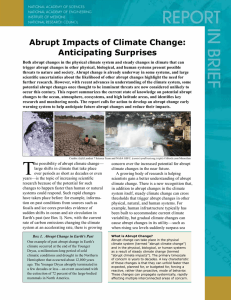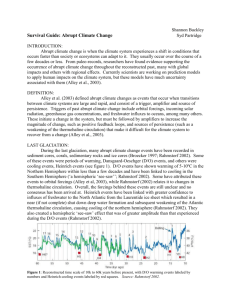Subsection 4.5 Mining Intervals of Abrupt Change in Climate Data
advertisement
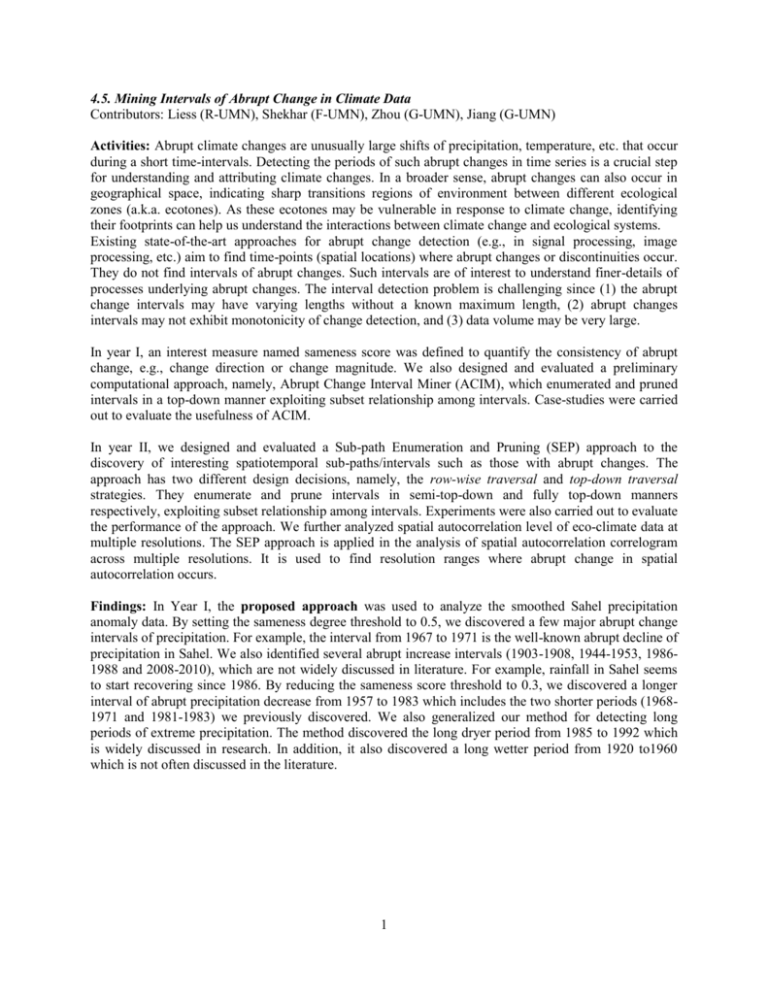
4.5. Mining Intervals of Abrupt Change in Climate Data Contributors: Liess (R-UMN), Shekhar (F-UMN), Zhou (G-UMN), Jiang (G-UMN) Activities: Abrupt climate changes are unusually large shifts of precipitation, temperature, etc. that occur during a short time-intervals. Detecting the periods of such abrupt changes in time series is a crucial step for understanding and attributing climate changes. In a broader sense, abrupt changes can also occur in geographical space, indicating sharp transitions regions of environment between different ecological zones (a.k.a. ecotones). As these ecotones may be vulnerable in response to climate change, identifying their footprints can help us understand the interactions between climate change and ecological systems. Existing state-of-the-art approaches for abrupt change detection (e.g., in signal processing, image processing, etc.) aim to find time-points (spatial locations) where abrupt changes or discontinuities occur. They do not find intervals of abrupt changes. Such intervals are of interest to understand finer-details of processes underlying abrupt changes. The interval detection problem is challenging since (1) the abrupt change intervals may have varying lengths without a known maximum length, (2) abrupt changes intervals may not exhibit monotonicity of change detection, and (3) data volume may be very large. In year I, an interest measure named sameness score was defined to quantify the consistency of abrupt change, e.g., change direction or change magnitude. We also designed and evaluated a preliminary computational approach, namely, Abrupt Change Interval Miner (ACIM), which enumerated and pruned intervals in a top-down manner exploiting subset relationship among intervals. Case-studies were carried out to evaluate the usefulness of ACIM. In year II, we designed and evaluated a Sub-path Enumeration and Pruning (SEP) approach to the discovery of interesting spatiotemporal sub-paths/intervals such as those with abrupt changes. The approach has two different design decisions, namely, the row-wise traversal and top-down traversal strategies. They enumerate and prune intervals in semi-top-down and fully top-down manners respectively, exploiting subset relationship among intervals. Experiments were also carried out to evaluate the performance of the approach. We further analyzed spatial autocorrelation level of eco-climate data at multiple resolutions. The SEP approach is applied in the analysis of spatial autocorrelation correlogram across multiple resolutions. It is used to find resolution ranges where abrupt change in spatial autocorrelation occurs. Findings: In Year I, the proposed approach was used to analyze the smoothed Sahel precipitation anomaly data. By setting the sameness degree threshold to 0.5, we discovered a few major abrupt change intervals of precipitation. For example, the interval from 1967 to 1971 is the well-known abrupt decline of precipitation in Sahel. We also identified several abrupt increase intervals (1903-1908, 1944-1953, 19861988 and 2008-2010), which are not widely discussed in literature. For example, rainfall in Sahel seems to start recovering since 1986. By reducing the sameness score threshold to 0.3, we discovered a longer interval of abrupt precipitation decrease from 1957 to 1983 which includes the two shorter periods (19681971 and 1981-1983) we previously discovered. We also generalized our method for detecting long periods of extreme precipitation. The method discovered the long dryer period from 1985 to 1992 which is widely discussed in research. In addition, it also discovered a long wetter period from 1920 to1960 which is not often discussed in the literature. 1 The Sahel (a) (b) Figure 5. (a) Map of vegetation cover (measured in Normalized Difference of Vegetation Index, NDVI) in Africa, Aug. 1-15, 1981. (b) Abrupt transitions of vegetation detected in Africa (south to north). ACIM was also used to analyze vegetation cover data (see Figure 5). It discovered many ecotones, as shown in Fig. 5(b); an interesting finding is characterization of Sahel of an ecotone, indicated by the green ellipse. In year II, experimental and theoretical analysis show that both proposed SEP row-wise and top-down algorithms are orders of magnitude faster than naive algorithm. The top-down design decision has better performance than the row-wise for datasets with longer patterns while the row-wise always has lower memory cost. We also applied our approach to analyze spatial autocorrelation correlogram across different resolutions. We compute the spatial autocorrelation (e.g., Moran’s I, Geary’s C) of NDVI in Africa across 40 different resolutions The general trend observed in these datasets is that the spatial autocorrelation measured by Moran’s I increase at very fine resolutions , reaching a peak and then slowly drops to a lower level. The turning point of the curve shows the resolution at which autocorrelation or heterogeneity vanishes. We also observed that the curve for February has hardly any abrupt change intervals while the August curve has a steadily decreasing interval (as shown in Fig. 6). These results are likely due to the fact that the vegetation in the rain forest and grassland are less irrigated by precipitation in the dry winter, which brings down the spatial heterogeneity at large scales. By contrast, the dense rain forest and grassland in summer (August) makes the land cover quite different at large scales, compared to the large area of deserts in the north. 2 Figure 6. Autocorrelation correlogram at multiple resolutions with the identified change/stable intervals. 3
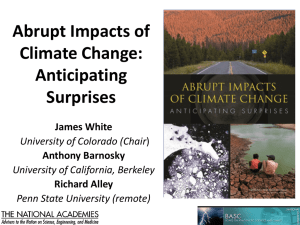
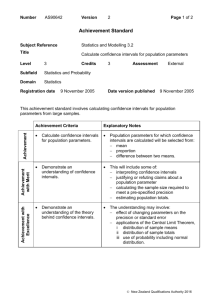





![The Average rate of change of a function over an interval [a,b]](http://s3.studylib.net/store/data/005847252_1-7192c992341161b16cb22365719c0b30-300x300.png)
